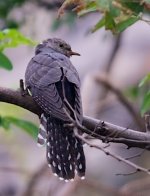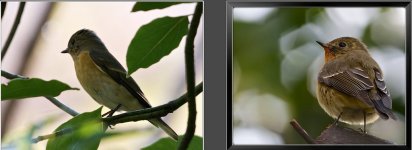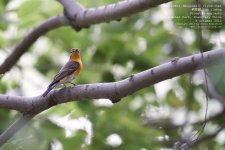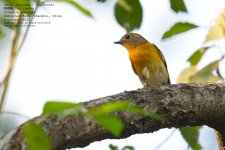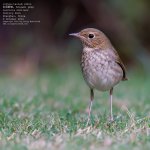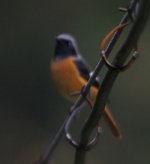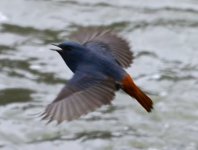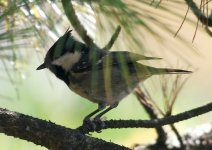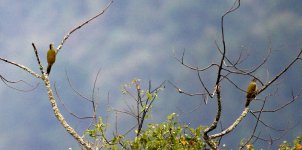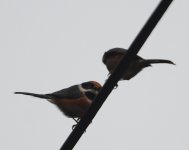Hi Frogfish, I see four photos in your post above. From left to right, the first is certainly a verditer; nice record. I don't see how you can call the second anything but a robin/mugimaki. The third, the dead bird, baffles me. I support your ID of the fourth as a lesser cuckoo, but if you put a gun to my head . . . after all, the pupil may merely be dilated; we may not be talking about a darker eye at all. That's why it pays to keep on snapping up shots. You probably have more images of the cuckoo and the dead bird; those shots may help us nail down an ID.
Thanks Craig !
2. The second Verditer shot is linked to (above - just click on it) as the forum software here will not accept two files that have very similar names.
3. I saw a lot of Mugimaki females (and took lots of shots - over 800 in total from the day, culled to 450) but none of the other Mugimaki females looked like this bird (rotund - the others were all typical flycatcher outlines) and it seems to match the picture in Brazil's very well. I'm probably wrong of course as book plates can be misleading ! I've uploaded a comparison below (A. looks like a female Mugimaki but B.) ???) and tell me what you think. it doesn't look like any Robin found in this region.
4. Mark has ID'd the dead bird as a Siberian Blue Robin.
5. Cuckoo - I hadn't thought of a dilated pupil. I have more shots so will check them and post another. EDIT - Now attached. I have 8 shots - 6 show the eye as black and they are not visible in the other two (in flight).
Attachments
Last edited:




